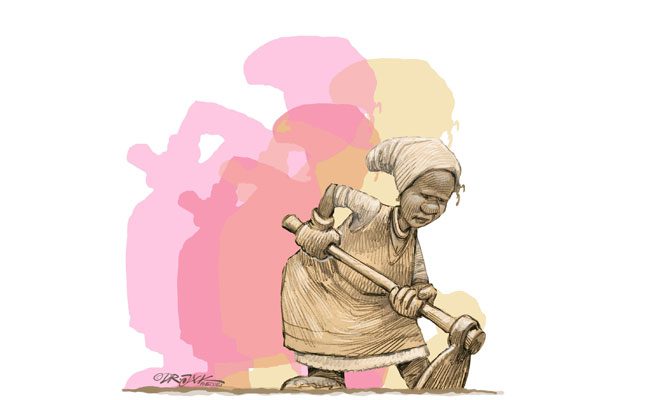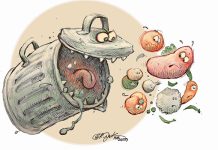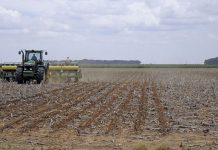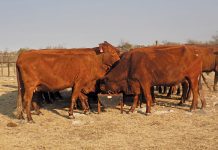
Globally, the share of both working men and women in agrifood systems declined by almost 10 percentage points between 2005 and 2019. In 2019, 36% of working women globally were employed in agrifood systems, down from 44% in 2005, while 38% of working men were employed in agrifood systems, down from 47%.
This reduction was driven by declining employment in primary agricultural production; the share of those working in off-farm segments of agrifood systems remained the same.
Declines of women’s employment in agrifood systems are evident in all regions apart from Southern Asia, where it has remained stable. The regional trends in Southern Asia are dominated by India, where female participation in the labour force is low, but labour-force participation is relatively high among the poorest women, who depend on agriculture.
Agrifood systems remain the main employer for women and men in sub-Saharan Africa and Southern Asia, but they are a far more important source of livelihood for women than for men. In sub-Saharan Africa, 66% of women’s employment is in agrifood systems, compared with 60% of men’s employment. In Southern Asia, 71% of women workers are engaged in agrifood systems, compared with 47% of men workers.
Women comprised 38% of all agricultural workers in crop, livestock, fisheries and forestry production around the world in 2019, a decrease of only 1% from 2000. Women do not constitute the majority of agricultural workers globally, nor is their share in agriculture increasing in most regions, pointing to little evidence of “feminisation of agriculture” at the global or regional level.
Gendered patterns of participation in and returns from off-farm agrifood-system activities vary and depend on the type of value chain, local institutions and job characteristics.
First, wherever processing activities are involved, women tend to be engaged at higher rates than men. Examples come from diverse contexts such as coffee value chains in Uganda, cassava value chains in the United Republic of Tanzania, jute value chains in Bangladesh and coffee, cocoa and dairy value chains in central Nicaragua.
In West Africa, the processing sector is dominated by women and tends to be unskilled and labour-intensive. Half of all workers in food processing and services and 40% of workers in manufacturing of non-food agricultural products, such as tobacco, paper and textiles, are women.
Second, across various value chains, few women are involved in the more profitable activities of transporting or wholesale trading.
Transport sector
Transport and wholesale tend be dominated by men, at least in part because they require greater capital, higher mobility and interactions with outsiders. Women account for only 35% of all wholesale workers and 15% of transport workers in agrifood systems.
In areas closer to larger urban centres, women are highly engaged in retailing, which serves as an important source of independent self-employment.
A 2022 FAO study of food retailers conducted in six countries in sub-Saharan Africa, Latin America and the Caribbean reveals that a large share of food retailers in sub-Saharan Africa are women, while women comprise a smaller share of food retailers in Latin America and the Caribbean.
In sub-Saharan Africa, the share of women retailers varied from 57% in Kenya and Tanzania to 75% in Senegal. In comparison, 26% of retailers in Ecuador and 31% of retailers in Paraguay were women.
Globally, women are estimated to account for around 53% of all retail trade workers in agrifood systems. The same study also found that women trade in less-profitable commodities than men do.
Women are over-represented among retailers of fruits and vegetables, in particular pulses, nuts and seeds, and staple crops (including grains, roots, tubers and bananas), which are among the lower-profit products, whereas men are more likely to sell industrially processed foods and beverages. Men also account for a larger share of retailers in a range of animal products with higher returns.
Women account for a larger share of fish retailers in four out of the five sub-Saharan African countries in the sample.
Female retailers also tend to sell lower volumes of food products than male retailers. As a result, female retailers report significantly lower monthly profits than do male retailers. In five out of the seven countries, men’s profits are more than twice as high as women’s profits.
Livestock sector
The livestock sector provides income to some 60% of rural households. Fisheries and aquaculture primary sectors employ nearly 60 million people worldwide and millions more across aquatic food value chains. Despite their importance in rural livelihoods, there is a dearth of robust global- or national-level datasets that document the gendered patterns of participation, power relations and returns in livestock, forestry and fisheries subsectors.
Women’s roles and gender relations in livestock, forestry and fisheries often differ by the type of species and final product, market orientation, scale of operation and the sociocultural contexts in which the value chains are embedded. Traditional gender norms tend to be biased against women, relegating them to jobs with lower returns.
Case studies point to women comprising a larger share than men of poor livestock keepers, and this varies significantly by livestock species. The most profitable breeds of livestock (cattle, camels and buffalo) are often under the control of men; women are more likely to control less-profitable livestock breeds (poultry and small ruminants).
Across the developing world, smallholder poultry value chains tend to be dominated by women. Nonetheless, women tend to be responsible for day-to-day animal care and management and processing of animal products, while their roles in marketing of animal products can vary substantially by product and context.
For example, a recent study found a majority of women trading in eggs in only one country (Burkina Faso) and in poultry in two countries (Malawi and Senegal), reinforcing the message that men’s participation in livestock-related activities increases with greater market orientation.
Formal vs informal markets
Women are commonly more involved in informal than formal markets, and as a result their contributions may be under-reported and data may poorly reflect their realities of working in the sector.
Livestock interventions remain key in agricultural development and are linked to significant improvements in women’s well-being. Increasing women’s access to support and inputs can improve animal health and livestock productivity.
Livestock species that are commonly under the control of women, such as poultry, rabbits, pigs and goats, require less initial capital than larger livestock, and investments in activities involving these species can have significant impact on the income of women, especially those in remote areas.
Twenty-eight percent of all workers in the aquaculture primary sector are women, as are 18% of all workers in the fisheries primary sector, but the share of women increases to about 50% of all workers when the entire aquatic value chain (including pre- and post-harvest) is considered.
However, their jobs tend to be more precarious than those of men: women hold only 15% of the full-time positions in the aquaculture and fisheries primary sectors, and 71% of the part-time jobs in processing are held by women. A recent study found that women accounted for 39,6% of all people working for pay or subsistence throughout the small-scale fisheries value chain and 49,8% of workers in post-harvest areas.
Men dominate offshore and high-value fisheries, while more women than men are involved in the harvesting and gleaning of shellfish and invertebrates. And, although women account for a large share of workers in the processing node of aquaculture and fishery value chains, they are particularly over-represented among seasonal or part-time workers, frequently paid less than men even for the same activity, and largely absent from middle- and higher-management positions.
The views expressed in our weekly opinion piece do not necessarily reflect those of Farmer’s Weekly.
This is an excerpt of a report by the Food and Agriculture Organization of the United Nations.













